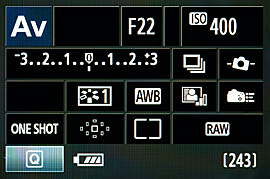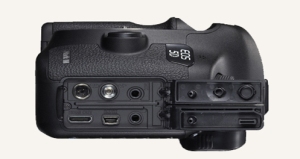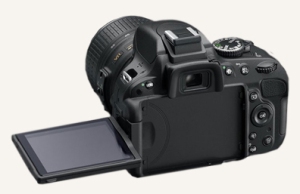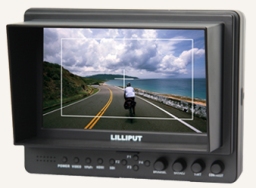Since we spoke last time about the resolution, the used sensor, the viewfinder and the weight of the camera we are hopefully about to buy, we will discuss more specific parts this time, like the manual control, the connections or input/output. Like always I will try to keep it short as possible but still interesting. At this point I’ve decided to split this up in a 3-part-series, which will make it easier not only for you but also for me.
 The job of your DSLR camera is to accurately measure the scene you are filming and produce a picture that accurately reflects it. Your job as a cinematographer is to analyze the scene, analyze what the camera gives you, and make modifications as necessary. With manual controls you are now able to find the excact settings to create the outcome you want. We have to control shutter speed, aperture or ISO to adapt to the situation.
The job of your DSLR camera is to accurately measure the scene you are filming and produce a picture that accurately reflects it. Your job as a cinematographer is to analyze the scene, analyze what the camera gives you, and make modifications as necessary. With manual controls you are now able to find the excact settings to create the outcome you want. We have to control shutter speed, aperture or ISO to adapt to the situation.
Why am I telling you this you may ask? Richard Kiefer ( you can find him on his website and blog or at Twitter ,if you are interested in more of his opinions ) gave me a good hint in one of the comments (which you can check here for exact words) of my last blogpost. The fact is: Not every “modern” DSLR supports manual controls in video mode even if you might think so. Even though it’s more an exception and you still should inform about the camera you are about to buy.
As we are going forth we will look at the outside and hardware of the DSLR again. At the top or in the front you mostly like to find your integrated camera microphone. Some cameras just support mono, others stereo, but in the end it won’t matter for us since the quality of the inbuilt microphones is just no rival to external sound recording. Even if you are using your inbuilt microphone, like on a spontaneous trip, it won’t make such a big difference between mono or stereo.
 At the side of most of the modern cameras you can find the Input and Output slots for your audio or video. Beside them there are USB and HDMI for example. Of course this will be different to each camera you choose. You should beware of the fact that most of the lower-budget cameras don’t suppor audio/sound monitoring because of a missing headphone slot. As we are going deeper in the world of shooting film and handling the gear, we will see that this isn’t that necessary. We will have an external recorder with an own microphone (XLR connections) and own headphones, but we will come to that much later. Since I brought the argument for not really caring about inbuilt sound equipment, I still have to say something about the recording of audio. If you are shooting just with an external microphone put on our camera (what we will do in the very beginning) your audio will be regulated by the “Automatic Gain Control” (AGC henceforth) of the camera. AGC isn’t a really bad thing and in modern cameras it has a pretty good outcome. But in the end effect it will regulate your heights down and your downs up, and what will you get out? Right – A pretty flat sound mix. But you are not lost to bad audio. Gladly there are some great tips and programs out there, with which you can disable the AGC if you want to. For beginners it isn’t the worst choice to trust into the AGC, just to concentrate better on other things.
At the side of most of the modern cameras you can find the Input and Output slots for your audio or video. Beside them there are USB and HDMI for example. Of course this will be different to each camera you choose. You should beware of the fact that most of the lower-budget cameras don’t suppor audio/sound monitoring because of a missing headphone slot. As we are going deeper in the world of shooting film and handling the gear, we will see that this isn’t that necessary. We will have an external recorder with an own microphone (XLR connections) and own headphones, but we will come to that much later. Since I brought the argument for not really caring about inbuilt sound equipment, I still have to say something about the recording of audio. If you are shooting just with an external microphone put on our camera (what we will do in the very beginning) your audio will be regulated by the “Automatic Gain Control” (AGC henceforth) of the camera. AGC isn’t a really bad thing and in modern cameras it has a pretty good outcome. But in the end effect it will regulate your heights down and your downs up, and what will you get out? Right – A pretty flat sound mix. But you are not lost to bad audio. Gladly there are some great tips and programs out there, with which you can disable the AGC if you want to. For beginners it isn’t the worst choice to trust into the AGC, just to concentrate better on other things.
 Another big deal for us will be the way we will control our image. Nearly every DSLR got a LCD screen nowdays, so it won’t be a big deal to watch what we are doing. In part one if this series we talked about the inbuilt viewfinder, which we won’t use that often. What is more important, is the question: Do we want a turnable LCD screen? In my eyes it’s definitely “yes”. Even if I plan to do a lot with an external monitor, I know I will be happy about every time I don’t shoot with the external monitor and have to bob my head down to see what I am filming. Maybe that could be the right choice for you too. Where I am less sure about is the touchscreen which a lot of cameras got now. It’s some time ago now, as I had the chance to try one of them, even though I can’t remember the camera, and it was pretty hard to get forward at all. Nonetheless I’ve heard good reviews about modern touchscreens, which are easy to handle and pretty similar to smartphone screens. I won’t give you a direct suggestion at this point. This is something I will be able to report about when I get the chance to try out a few different screens.
Another big deal for us will be the way we will control our image. Nearly every DSLR got a LCD screen nowdays, so it won’t be a big deal to watch what we are doing. In part one if this series we talked about the inbuilt viewfinder, which we won’t use that often. What is more important, is the question: Do we want a turnable LCD screen? In my eyes it’s definitely “yes”. Even if I plan to do a lot with an external monitor, I know I will be happy about every time I don’t shoot with the external monitor and have to bob my head down to see what I am filming. Maybe that could be the right choice for you too. Where I am less sure about is the touchscreen which a lot of cameras got now. It’s some time ago now, as I had the chance to try one of them, even though I can’t remember the camera, and it was pretty hard to get forward at all. Nonetheless I’ve heard good reviews about modern touchscreens, which are easy to handle and pretty similar to smartphone screens. I won’t give you a direct suggestion at this point. This is something I will be able to report about when I get the chance to try out a few different screens.
 Now, as we talked so much about external monitoring beside, I have to loose some words about this particular topic too. It was hard to inform about that, because it is different from camera to camera, but I’ve heard that there are some issues with the external monitoring through HDMI ( if you don’t use the AV output or already another monitor ). The fact is that on some cameras monitoring through HDMI will disable your live-view on the LCD screen and in some cases to AV output too. In other cases it happens that the recorded solution of 1080p won’t be transmitted completely, so you have 720p or less (480p). So be aware of that if you are interested in this, ask a competent person at the market where you are about to buy your camera, try to find out through the support of amazon for example or get in contact with the producer.
Now, as we talked so much about external monitoring beside, I have to loose some words about this particular topic too. It was hard to inform about that, because it is different from camera to camera, but I’ve heard that there are some issues with the external monitoring through HDMI ( if you don’t use the AV output or already another monitor ). The fact is that on some cameras monitoring through HDMI will disable your live-view on the LCD screen and in some cases to AV output too. In other cases it happens that the recorded solution of 1080p won’t be transmitted completely, so you have 720p or less (480p). So be aware of that if you are interested in this, ask a competent person at the market where you are about to buy your camera, try to find out through the support of amazon for example or get in contact with the producer.
Well, we already reached the end of this part, wasn’t that bad, or? In the third part of this series we will talk about the batteries and how it can save you some money by knowing which batteries you got in your camera. Also we will discuss the different types of memory cards for your camera and how it could influence your purchase. Furthermore we will take a close look to some software and their compatibility to some cameras.
I hope you enjoyed reading this post as much as I enjoyed it writing it for you guys. I just wanted to give you a big “Thanks“, because you already gave me such a big support which I’ve had never expected.
Feel free to share this project with your friends, family or colleagues if you liked it so far.
Leave me your thoughts, your inspirations and your ideas if you feel so.
Also don’t forget to follow “Get Film Started” on Twitter, Facebook or Google+ to stay tuned for the latest news and blogposts.
Thanks and see you next time – Cornelius
